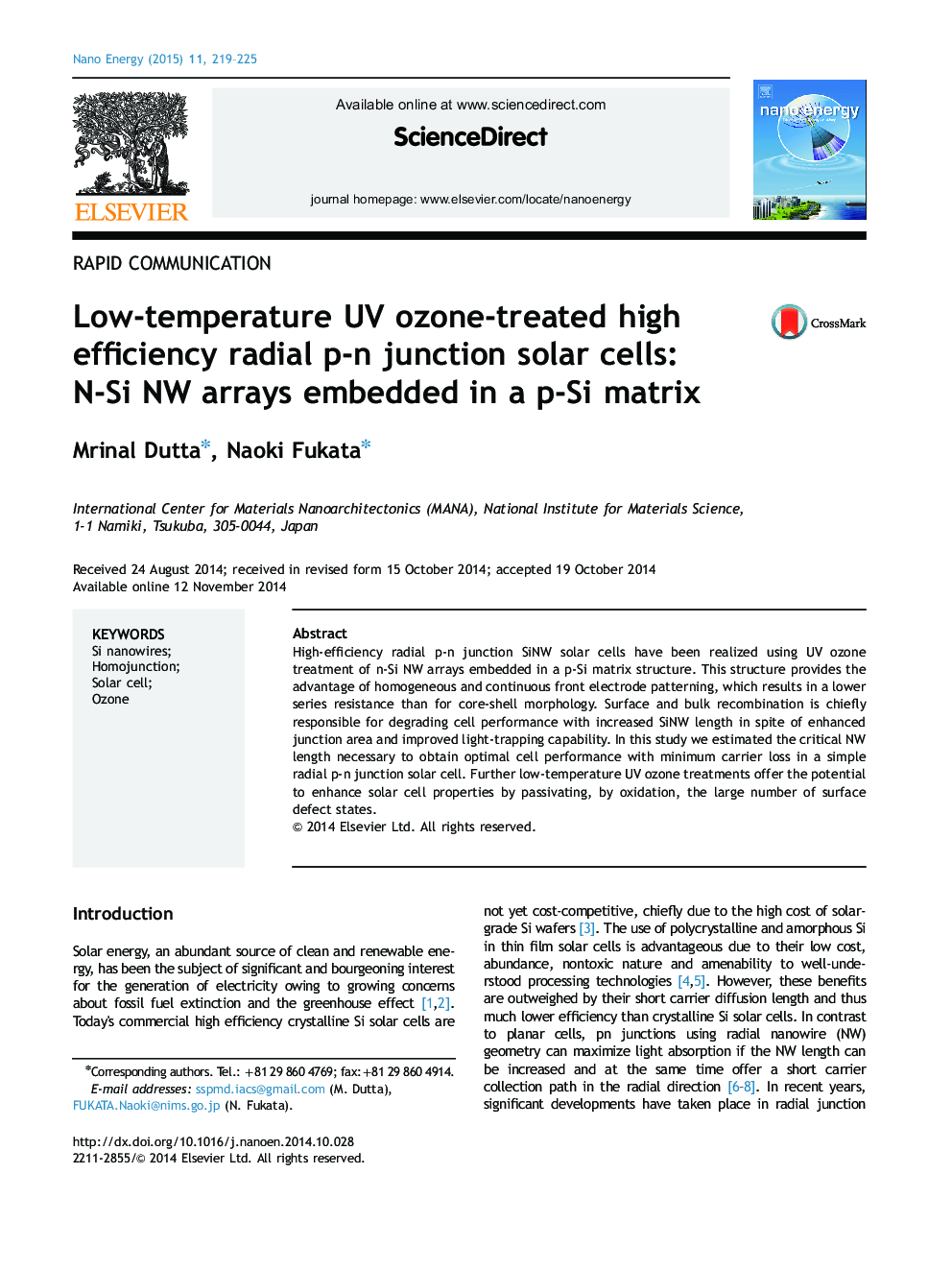| کد مقاله | کد نشریه | سال انتشار | مقاله انگلیسی | نسخه تمام متن |
|---|---|---|---|---|
| 1557677 | 1513755 | 2015 | 7 صفحه PDF | دانلود رایگان |

• A new type of radial junction solar cell structure is proposed.
• Uniform front contact pattering reduces contact resistance.
• A trade off between nanowire length and surface/interface recombination is achieved.
• We proposed low temperature UV ozone annealing to reduce surface/interface defects.
• For polycrystalline Si nanowire solar cells efficiency reaches to 8.4%.
High-efficiency radial p-n junction SiNW solar cells have been realized using UV ozone treatment of n-Si NW arrays embedded in a p-Si matrix structure. This structure provides the advantage of homogeneous and continuous front electrode patterning, which results in a lower series resistance than for core-shell morphology. Surface and bulk recombination is chiefly responsible for degrading cell performance with increased SiNW length in spite of enhanced junction area and improved light-trapping capability. In this study we estimated the critical NW length necessary to obtain optimal cell performance with minimum carrier loss in a simple radial p-n junction solar cell. Further low-temperature UV ozone treatments offer the potential to enhance solar cell properties by passivating, by oxidation, the large number of surface defect states.
High-efficiency radial p-n junction SiNW solar cells have been realized using UV ozone treatment of n-Si NW arrays embedded in a p-Si matrix structure. Surface and bulk recombination found to degrade cell performance with increased SiNW length in spite of enhanced junction area and improved light-trapping capability. Low temperature UV ozone annealing has been found as a promising alternative to hydrogenation technique commonly use to reduce defects in Si solar cells.Figure optionsDownload as PowerPoint slide
Journal: Nano Energy - Volume 11, January 2015, Pages 219–225